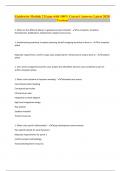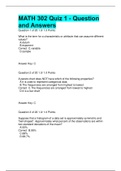Resume
Summary of the Cognitive Approach (PY1 - Approaches in Psychology)
- Cours
- Établissement
A summary of all the information needed to answer questions on the cognitive approach for the unit 1 exam of WJEC AS Level Psychology. Includes: - Assumptions (the computer analogy, internal mental process, schemas) - Application to relationships - Therapy and Evaluation - Key Study (Eyewitness acc...
[Montrer plus]





